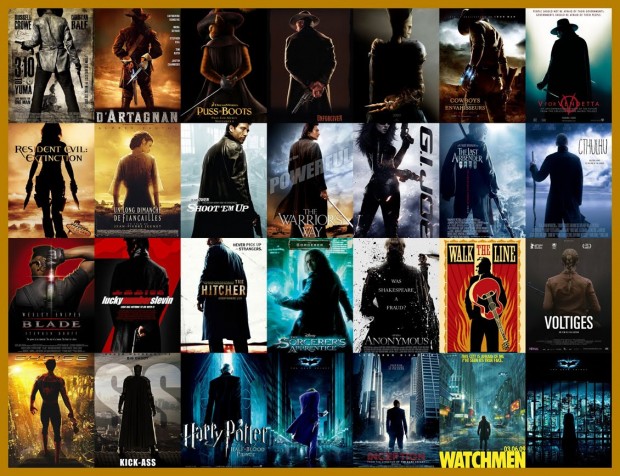An iconographic and text archive related to communication, technology and art.
☛ Jason Salavon: “Every Playboy Centerfold, The Decades (normalized)”, Digital C-prints, Ed. 5 + 2 APs. 60″ x 29.5″, 2002.
From a broader series begun in 1997, the photographs in this suite are the result of mean averaging every Playboy centerfold foldout for the four decades beginning Jan. 1960 through Dec. 1999. This tracks, en masse, the evolution of this form of portraiture.
Like Jeremy Geddes, Jason Salavon worked as a programmer in the video game industry before leaving it to “embrace the challenge of becoming a full-time practicing fine artist” (read his Career Narrative). Salavon is well known for manipulating vast quantity of iconographic materials through the mean of computer softwares. It is sometime associated with the practice of data visualization with this exception that it is less demonstrative than it is suggestive (see for example the article “Artistic Data Visualization: Beyond Visual Analytics” by Fernanda B. Viégas and Martin Wattenberg, 2007: PDF). Here’s a short analysis pertaining to the “Every Playboy Centerfold…” piece as offered by the Museum of Contemporary Photography:
Salavon chose to blend pictures of not-so-average women in his series Every Playboy Centerfold. By fusing 120 centerfolds from each decade in the 1960s – 90s, Salavon created blurred compositions emphasizing predominant characteristics of the typical Playboy model: long hair, light skin, thin body, radiant against a bluish background. Presented as a series, the pictures reveal the thinning, lightening, and increased frontality of the playmates over the years.
Two things strike me in the series. The first one has to do with the change in hues: it starts with a warm-orange in the 60’ and ends up being colder, almost white in the 90’. I can think of three hypothesis to explain this transformation: 1) A change in taste analogous to the evolution in the aesthetic canon for the female body shape (see recently Anna Utopia Giordano’s Venus project for an artistic comment about this); 2) A technological change in the ways by which such color photos were taken, produced and reproduced; 3) It could also be that sensibilities to the photographic image changed in synchronicity with the evolution of technology.
The second thing I find interesting is the relationship between the alleged uniqueness of each of those centerfold (each one of those women posing for the centerfold) and the barely recognizable, blurry averageness produced when all of them are mashup together. I’m wondering is this process is not already at work in each of the individual issue of the magazine. From this perspective, the centerfold would act as an apparatus capable of reducing any female singularity (or haecceity: that which make an individual unique) into an average model: by carefully selecting each Playmate, dictating the pose, adjusting the lighting, choosing the background and the accessories, etc. If this is the case, Jason Salavon piece is averaging an averageness. However, by this kind of artistic exponentiation, his work exposes more blatantly a process that may otherwise go unnoticed.
I’m wondering if something similar can be observed in the design of Hollywood movie posters. Although they differ in small details, their main features are sometime strikingly similar. See the work of Christophe Courtois on this matter (one of his example is displayed bellow).

More information online about Jason Salavon:
- On his official website, one can browse though Jason Salavon’s work (from his early work back in 1991 to his most recent work), watch a three part documentary about him, read some technical notes about how he works (for example, the “Decades” series was done “in C/C++ on Windows boxes with the ImageMagick C++ libraries”), explore articles and reviews written in reation to his art and much more.
- Salavon is represented by different galleries. See for example Gaain Gallery, Mark Moore Gallery and Inman Gallery.
- The piece “Figure 1. Every Playboy Centerfold, 1988-1997” was sold by Christie on May 2006: Sale 1660 / Lot 697.
[UPDATE–August 23, 2014] See also AverageExplorer: Interactive Exploration and Alignment of Visual Data Collections.
- By Philippe Theophanidis
- on
- ― Published in Art, Photography, Technology
- Tagged: aesthetic, average, beauty, canon, code, Jason Salavon, model, Playboy, software, visualization, woman

